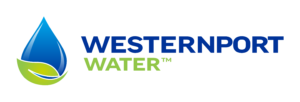Catchment and waterway health
What is a drinking water catchment?
A catchment is a an area of land where rainfall collects in rivers and streams, or seeps into the soil to become groundwater. In the case of drinking water catchments this water may be stored in reservoirs or pumped from groundwater reserves.
The Candowie Catchment is an open catchment
Westernport Water’s water comes from an open catchment. Our catchment area contains land cleared for farming and rural properties that undertake activities such as cattle farming, crop farming, forestry and timber harvesting. Our water requires rigorous water treatment to ensure the water that’s produced meets safety and quality requirements set by the Department of Health and Human Services and Australian Drinking Water Guidelines. Unlike Melbourne’s catchments that are considered closed catchments, that are surrounded by thick vegetation and have limited public access.
Protecting our drinking water
Melbourne Water plays a large part in helping protect our waterways and the quality of our drinking water supply by working with landowners in the catchment to fence off streams and river frontage and by undertaking vegetation works along riverbanks and maintaining waterways. This work is helping to protect the water catchment from human and animal contamination and erosion.
Work to improve waterway health
Melbourne water carries out a variety of activities to protect waterways, from delivering on-ground works to participating in state and regional planning. They encourage others to care for our waterways through support and education programs, stewardship programs and help with improvements through incentive schemes that provide funding support to land owners and managers.
Find out more about the work Melbourne Water does in our catchment

